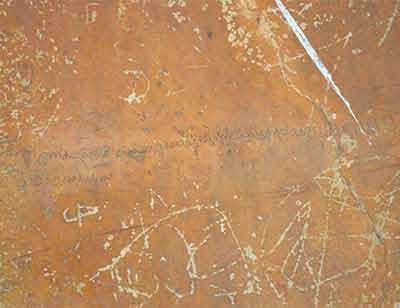|
Eksath Bhikkhu Peramuna
The Eksath Bhikkhu Peramuna () was an umbrella organization consisting of two associations of Buddhist monks founded in 1956 in the Dominion of Ceylon (today Sri Lanka) to promote Sinhalese Buddhist interests in politics. It campaigned against the United National Party (UNP) and helped to bring the Mahajana Eksath Peramuna to power in the 1956 general election. It became defunct following the assassination of Prime Minister S. W. R. D. Bandaranaike. Background In preparations for the Buddha Jayanti celebrations marking the 2,500th anniversary of the Buddha's death set to begin in May 1956, various Buddhist associations were formed in the early 1950s to restore Buddhism to what they thought was its rightful place on the island. Due to the efforts of a handful of Buddhist civil servants, teachers and lawyers, disparate associations of Buddhist monks from all three sects were brought together to form the Sri Lanka Maha Sangha Sabha in 1953, which became an important interest group ... [...More Info...] [...Related Items...] OR: [Wikipedia] [Google] [Baidu] |
Bhikkhu
A ''bhikkhu'' (, ) is an ordained male in Buddhist monasticism. Male, and female monastics (''bhikkhunī''), are members of the Sangha (Buddhist community). The lives of all Buddhist monastics are governed by a set of rules called the pratimokṣa, prātimokṣa or pāṭimokkha, pātimokkha. Their lifestyles are shaped to support their spiritual practice: to live a simple and meditative life and attain Nirvana (Buddhism), nirvana. A person under the age of 20 cannot be ordained as a bhikkhu or bhikkhuni but can be ordained as a samanera, śrāmaṇera or śrāmaṇērī. Definition ''Bhikkhu'' literally means "begging, beggar" or "one who lives by dāna, alms". The historical Buddha, Gautama Buddha, Prince Siddhartha, having abandoned a life of pleasure and status, lived as an alms mendicant as part of his śramaṇa lifestyle. Those of his more serious students who renounced their lives as householders and came to study full-time under his supervision also adopted this lifest ... [...More Info...] [...Related Items...] OR: [Wikipedia] [Google] [Baidu] |
Walpola Rahula Thero
Walpola Rahula Thero (9 May 1907–18 September 1997) was a Sri Lankan Buddhist monk, scholar and writer. In 1964, he became the Professor of History and Religions at Northwestern University, thus becoming the first bhikkhu to hold a professorial chair in the Western world. He also once held the position of Vice-Chancellor at the then Vidyodaya University (currently known as the University of Sri Jayewardenepura). He has written extensively about Buddhism in English, French and Sinhala. He wrote the book '' What the Buddha Taught'' about Theravada Buddhism. Biography He was born on 9 May 1907 at Walpola, a small village in the Galle district of southern Sri Lanka. At thirteen, he entered the Sangha. His education covered Sinhala, Pali, Sanskrit, Buddhism, history and philosophy. He studied at the Vidyalankara Pirivena and at the University of Ceylon, where he associated with E. F. C. Ludowyk, G.P Malalasekera, E. W. Adikaram and other scholars. After his period at the Sorb ... [...More Info...] [...Related Items...] OR: [Wikipedia] [Google] [Baidu] |
Sinhala Language
Sinhala ( ; Sinhala: , , ), sometimes called Sinhalese ( ), is an Indo-Aryan language primarily spoken by the Sinhalese people of Sri Lanka, who make up the largest ethnic group on the island, numbering about 16 million. It is also the first language of about 2 million other Sri Lankans, as of 2001. It is written in the Sinhalese script, a Brahmic script closely related to the Grantha script of South India. The language has two main varieties, written and spoken, and is a notable example of the linguistic phenomenon known as diglossia. Sinhala is one of the official and national languages of Sri Lanka. Along with Pali, it played a major role in the development of Theravada Buddhist literature. Early forms of the Sinhalese language are attested to as early as the 3rd century BCE. The language of these inscriptions, still retaining long vowels and aspirated consonants, is a Prakrit similar to Magadhi, a regional associate of the Middle-Indian Prakrits that had been ... [...More Info...] [...Related Items...] OR: [Wikipedia] [Google] [Baidu] |
Left-wing Politics
Left-wing politics describes the range of Ideology#Political ideologies, political ideologies that support and seek to achieve social equality and egalitarianism, often in opposition to social hierarchy either as a whole or of certain social hierarchies. Left-wing politics typically involve a concern for those in society whom its adherents perceive as disadvantaged relative to others as well as a belief that there are unjustified inequalities that need to be reduced or abolished, through radical means that change the nature of the society they are implemented in. According to emeritus professor of economics Barry Clark, supporters of left-wing politics "claim that human development flourishes when individuals engage in cooperative, mutually respectful relations that can thrive only when excessive differences in status, power, and wealth are eliminated." Within the left–right political spectrum, ''Left'' and ''right-wing politics, Right'' were coined during the French Revolu ... [...More Info...] [...Related Items...] OR: [Wikipedia] [Google] [Baidu] |
Kelaniya Raja Maha Vihara
The Kelaniya Raja Maha Vihara or Kelaniya Temple is a Buddhist temple in Kelaniya, Sri Lanka. It is located north-east of Colombo. The current chief incumbent (chief priest) is Venerable Professor Kollupitiye Mahinda Sangharakkhitha Thera. The temple has often been associated with the rise and fall of Sri Lanka, with the popular saying that as the Kelaniya temple rose, Sri Lanka rose and as it fell, the country and its administration fell. It has thus had a deep association with the political powers of the country. As such, the temple is frequently visited by politicians both government and opposition. History Buddhists believe the temple to have been hallowed during the third and final visit of the Buddha to Sri Lanka, eight years after gaining enlightenment. Wilhelm Geiger (Tr), ''The Mahavansa, or The Great Chronicle of Ceylon'', Oxford, OUP, 1920. Its history would thus go back to before 500 BCE. The Mahawansa records that the original Stupa at Kelaniya enshrined a gem ... [...More Info...] [...Related Items...] OR: [Wikipedia] [Google] [Baidu] |


